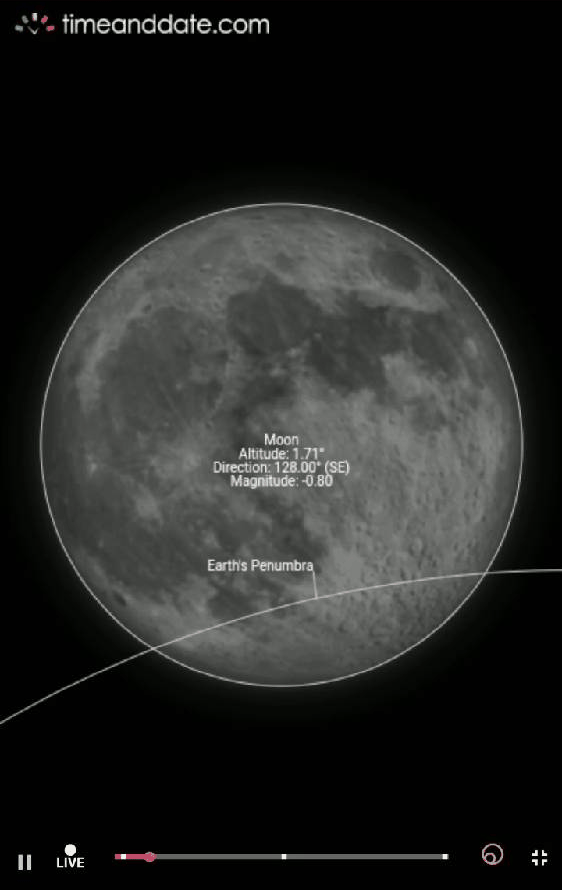Stargazing: 5 Websites to Keep up with Celestial Events 2020
There is something interesting happening all the time in the cosmos that is worth investigating. In the world of amateur astronomical observation, it’s fun to keep up with current events observable in your area. Here’s a list of places that can help keep you current on what’s going on in the universe for 2020:
Space.com’s 2020 calendar
2020’s observable events to include the Quadrantid meteor shower earlier this month, Mars / lunar conjunction in February, maximum Venusian apparition as well as extreme lunar perigee in April, Annual eclipse of the sun in June visible from much of the Orient, the Perseid meteor shower in August, Mars will become the third brightest object in the nighttime sky during the majority of the month of October…and finally December finishing out the year with a solar eclipse visible in parts of South America and Africa, and the Geminid meteor shower towards the middle of the month and Jupiter and Saturn coming to conjunction towards the end of the month.
Space.com is a useful resource for astronomy related news and topics that is worth visiting every now and again for updates; users may also opt-in for related updates to be sent directly to their web browser. While advertisements pollute this website and makes it appear a tad tacky and commercialized, the main website is free to browse; Space.com also offers supplemental print and digital for-fee publications that may also be of interest to readers. A free forum is provided on the website for users that wish to interact with the Space.com community.
Sea and Sky’s “The Sky” website
This website is a bit more organized and succinct than that of Space.com. It lists all aforementioned events and some additional to them, to include such regular events as the solar equinox. Although the material is presented differently than Space.com, and perhaps has less flourish, the site is easily navigated and provides a wealth of information to all levels of amateur astronomer that wishes to expand his or her knowledge of astronomy related subjects.
The Astronomical League’s website
The Astronomical League is an organization that exists for the purpose of promoting the science of astronomy by fostering astronomy related education, providing incentives for astronomical research and assisting in communication between various astronomical societies. The Astronomical League’s website features a monthly celestial event poster that can be printed out and posted on your cubicle’s wall if you wish, complete with instructions on when, where and how to observe the one featured celestial event yourself.
The Astronomical League also offers “The Reflector”, a periodically published publication. As with all listed websites in this post, the main website is free of charge to visitors. Local astronomy chapters within the United States are listed on this website, allowing the amateur astronomer to get his or her bearings with like-minded people with similar interests in their area.
Go Astronomy’s 2020 calendar
While perfunctory in design, Go Astronomy’s calendar lends itself to printing and quick reference.
Go Astronomy presents itself as a guide to amateur astronomers, with the main website’s splash page allowing the user to select an area of interest. Topics include observatories and planetariums near the user as well as guides to deep sky objects, Citizen Science Programs and astronomical events.
In-The-Sky.org
If you’d prefer a standard calendar type arrangement of events, browse here:
You will see In-The-Sky’s 2020 calendar laid out for you in this sort of format. The advantage to this is that you can import this calendar into your phone’s calendar so you don’t miss anything! I find this website somewhat more minimalistic than the others listed here and for that reason I like it, although the drop-down menu format can make things difficult to find on the site until you’re used to the arrangement.
For those who are looking for events specifically visible from Ukraine in 2020, check out here.
Lunar eclipses are perhaps not quite as exciting as solar eclipses are, but this one being in early summer, it makes for a good excuse to go outside and observe!
Here’s to “keep looking up” in 2020!
Definitions:
Perigee and Apogee, as related to the moon
Vocabulary list:
Perfunctory: Carried out with minimal effort.
Tacky: Cheap, trashy.
Solar equinox: Occurring twice a year, once in spring and once in autumn, where the day and night are equal in length.
Celestial: Having to do with the sky.
Perigee: A condition where a celestial object, such as the moon, is closest to whatever it is that the object is orbiting, such as Earth.
Succinct: Clearly expressed.
Apparition: The appearing of; coming into view.
ABOUT THE AUTHOR
Nicholas Chudolij is graduate student within American Public University's Space Studies faculty, Astronomy track. Nicholas loves traveling, fishing, competitive marksmanship and playing the flute.






